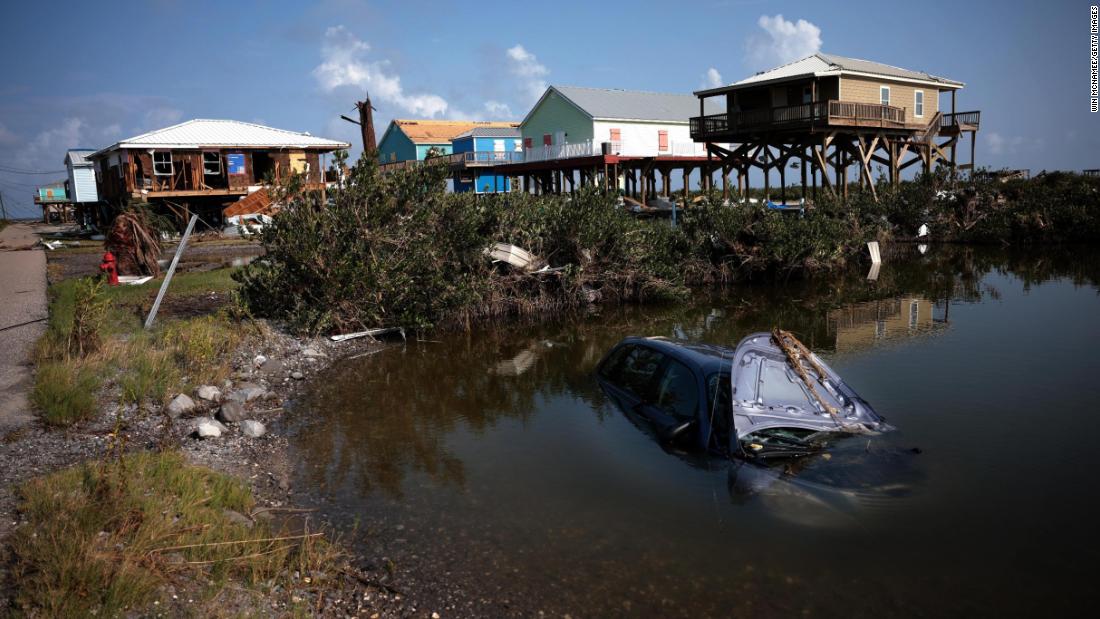
The storms could not have impacted at a worse time. “Any new problem with vehicle inventory is too much of a problem,” said Kayla Reynolds, Cox Automotive’s economic and industrial information manager.
This means big problems for the thousands of people who lost their vehicles when Hurricane Ida hit the Gulf Coast before attacking the northeast.
Retired school teachers Ira and Ruth Steinberg were perfectly pleased with their 2020 Honda Accord. Then the remnants of Hurricane Ida reached their suburban village of Hartsdale, about an hour north of the city. of New York.
A flash flood burst through the garage doors of the apartment and flooded it. No one was injured, but the 130 cars parked there were lost.
The Steinbergs called the Honda dealership where they had bought their previous car. “He said he didn’t have many cars to start with and that he had lost 85% of his cars because of the storm,” Ruth Steinberg said.
Fortunately, the Steinbergs ’loss will be covered by their insurance, which has a provision for renting a car after a loss, but they can’t find any. They are number 200 on the rental list for Enterprise.
The couple relies on their adult son, who lives nearby, to move. They don’t know what they will be able to afford once they get a clearance for their car, or when they will be able to buy it. But they try to maintain a good attitude.
High historical car prices
But that trend probably won’t continue after Ida.
“Sorry pun, but it’s the perfect storm situation. There’s never been anything like it,” said David Paris, JD Power’s chief market information manager. “We definitely see used vehicle prices rising two to three months after a storm. But that’s when there’s a good level of inventory. This is unfamiliar territory.”
Why floods destroy cars
Big storms can affect car prices across the country for many months, because so many cars are lost simultaneously.
“A car that has gone through a flood basically rots from the inside out,” said Patrick Olsen, executive editor of CarFax, which tracks car damage. “Whenever you get mud or slime on the connections, a short circuit can be created in the system, which can cause a car to stop while driving.”
Hurricane Harvey, which affected the Houston area in late August 2017, is believed to have been the most destructive in terms of severely damaged or destroyed vehicles. Cox Automotive estimates that up to 500,000 vehicles were lost in Texas due to this storm, compared to 250,000 in Superstorm Sandy in 2012 and 200,000 in Hurricane Katrina in 2005.
Hurricane Harvey increased the wholesale prices of used cars nationwide by about 3% the month following the hurricane and prices remained high until November. Experts fear it will be worse this time around, even if fewer cars are affected.
“It’s a historically tight market, so it’s going to have a much more inflated impact than we saw in previous storms like Harvey,” said Reynolds of Cox Automotive.
CarFax estimates that at least 212,000 vehicles were lost during the storm. And AIR Worldwide, which estimates the losses of the insurance industry due to natural disasters, believes that insurers will cover the losses of more than 250,000 Ida vehicles. And only 78% of vehicles will be insured for such losses, according to the Insurance Information Institute, which means the number of lost vehicles will be even higher than the insured losses.
“If you see a price too good to be true, it’s probably too good to be true for a reason,” JD Power’s Paris said.